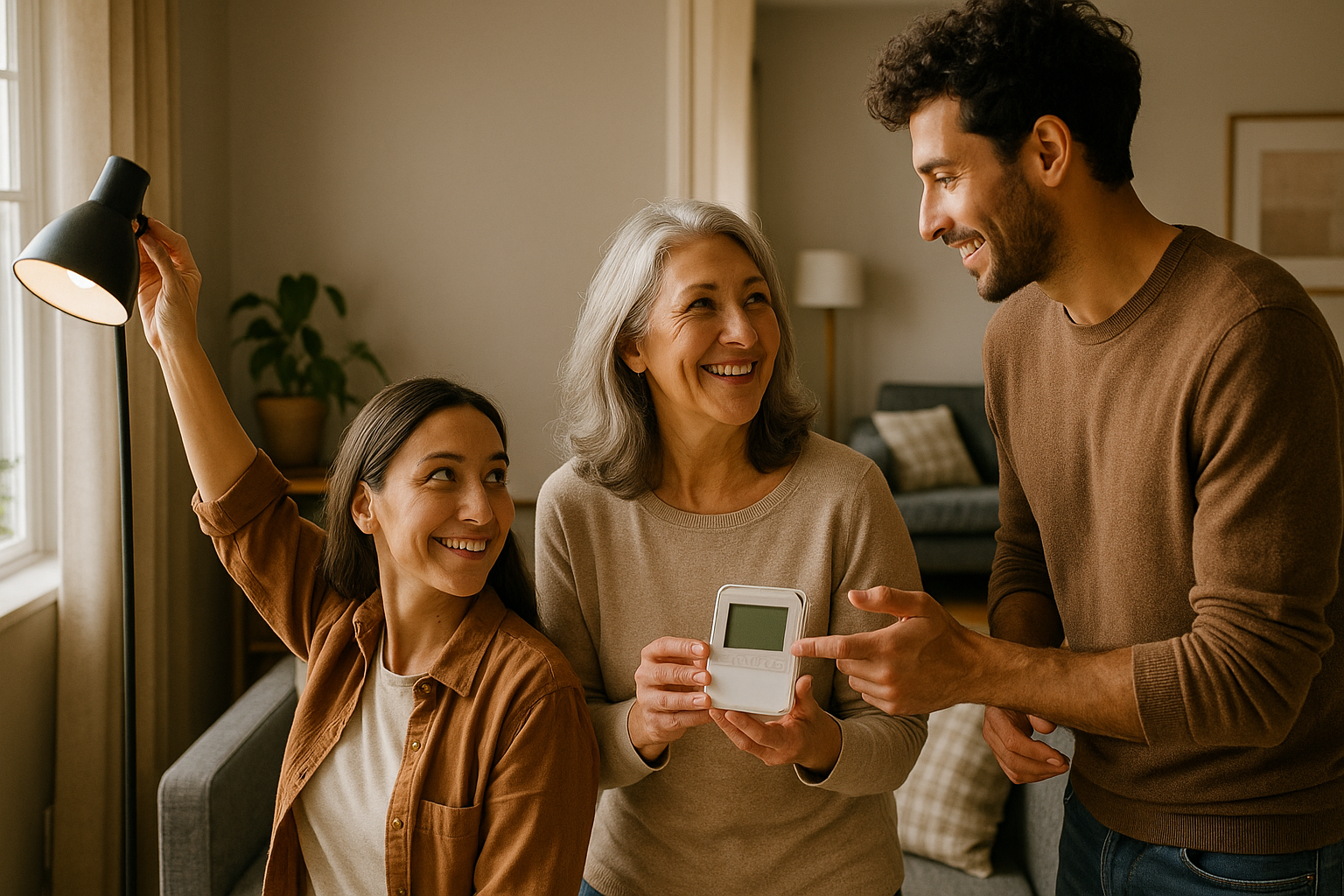Energy conservation isn’t just about saving money—it’s a powerful step toward reducing your carbon footprint. The great news is that you don’t need to live in the dark or freeze in the winter to make a difference.
This guide will show you how to reduce your home’s energy use through practical, affordable changes that support both your comfort and the planet.
Why Energy Reduction Matters
Most household energy still comes from fossil fuels, which contribute to:
- Greenhouse gas emissions
- Air and water pollution
- Global warming and extreme weather
- Resource depletion
Using less energy at home helps fight climate change and builds a more resilient, cost-effective lifestyle.
Understand Where Energy Goes
Knowing your home’s energy hotspots helps you target your efforts.
Biggest household energy consumers:
- Heating and cooling systems
- Water heaters
- Lighting
- Refrigerators and freezers
- Laundry machines and dryers
- Electronics on standby mode
Once you know where energy is going, you can cut usage without cutting comfort.
Start With Smart Heating and Cooling
Energy-saving tips:
- Set your thermostat a few degrees lower in winter and higher in summer
- Use ceiling fans or space heaters as targeted solutions
- Seal windows and doors to prevent heat loss
- Install weather stripping or draft stoppers
- Use curtains to block heat in summer and insulate in winter
A programmable thermostat can save 10–15% on heating and cooling costs annually.
Use Appliances Efficiently
Even eco-friendly appliances waste energy if used carelessly.
Best practices:
- Wash clothes in cold water
- Hang dry laundry when possible
- Run dishwashers and washing machines only with full loads
- Defrost your freezer regularly
- Unplug appliances you rarely use
Every small adjustment adds up over time.
Switch to LED Lighting
LED bulbs use up to 80% less energy and last 10–25 times longer than incandescent bulbs.
Tips:
- Replace bulbs in high-use areas first (kitchen, living room, workspace)
- Choose warm white for cozy spaces and cool white for task lighting
- Use dimmers where appropriate to save more energy
You’ll notice a quick drop in your electric bill.
Unplug the “Energy Vampires”
Electronics continue to draw power even when turned off.
Common culprits:
- TVs and game consoles
- Microwaves and coffee makers
- Chargers and smart devices
What to do:
- Plug devices into a power strip and switch it off when not in use
- Use smart plugs with timers or remote control
- Unplug chargers when not actively charging
Standby power can account for up to 10% of home energy use.
Reduce Water Heating Costs
Water heating is the second-largest energy expense in most homes.
Lower your use by:
- Setting the water heater to 120°F (49°C)
- Installing low-flow showerheads and faucet aerators
- Taking shorter showers
- Washing clothes in cold water
- Insulating hot water pipes
A few upgrades can lead to significant long-term savings.
Make the Most of Natural Light
Daylight is free—use it.
Bright ideas:
- Arrange furniture near windows for daytime reading or working
- Use light-colored curtains or blinds to reflect light
- Clean windows regularly for maximum brightness
- Work by window light during the day instead of turning on lamps
Natural light improves mood and productivity too.
Invest in Long-Term Energy Solutions
When you’re ready, consider home upgrades that reduce energy use permanently.
Sustainable investments:
- Energy-efficient windows
- Solar panels (where possible)
- Insulated doors and walls
- Smart thermostats and lighting
- ENERGY STAR-rated appliances
Look for rebates and tax credits in your region to offset the cost.
Involve the Whole Household
Make energy conservation a shared mission.
- Talk to kids or roommates about turning off lights and devices
- Set family goals (e.g., “reduce the bill by 10% this month”)
- Celebrate small wins and progress together
- Share the impact: less energy = fewer emissions + lower costs
Teamwork makes new habits stick.
Save Energy, Live Better
Reducing energy at home isn’t about restriction—it’s about intention. When you use energy more wisely, you create a more comfortable, efficient, and future-friendly living space.
So switch off, unplug, and enjoy the simplicity of a well-lit, well-loved, low-energy home.
